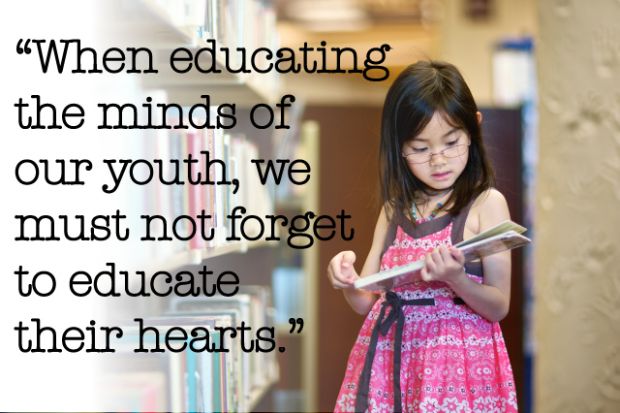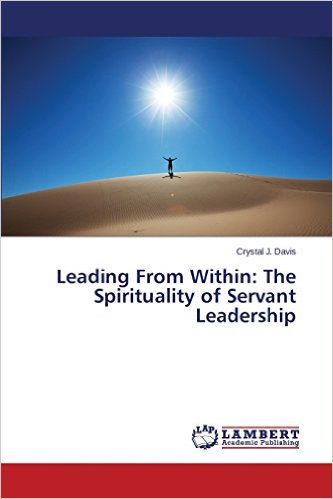
“When educating the minds of our youth, we should not forget to educate their hearts.”
~ Dalai Lama
Servant Leaders understand that education today requires more than the standard textbook education or standard body of knowledge taught in the classroom. This education includes the basics of how the mind works, a healthy regulation of emotions, the cultivation of attention, mindfulness, empathy, and caring; learning to handle conflicts nonviolently; and a sense of wholeness and oneness with all of life. What is needed today is an education of the heart with ethics and the capacity for living by compassion and values as essential. This is what the Dalai Lama argues in the book, A Force for Good: The Dalai Lama’s Vision for Our World, chapter ten, Educate the Heart.
Mind Training
The Dalai Lama coached a young student, an 11th grader at Moberly High school who had on EEG headgear that was tracking her concentration. As she stayed focused, a line on the machine drifted upward. As her focus declined, the line drifted downward. Some of her friends were told to do things to distract her.
As the Dalai Lama began to coach he explained that when training the mind, one should make a distinction between the mental and sensory level. When focusing in on an object, the work is both mental and eye consciousness. He said when you focus on what’s in front of you, the mind can be limited as what is in front of us is only a prop. But when you reach the mental level, you can ignore the eye consciousness and focus on what is in your mind.
He told the student to close her eyes and focus on the mental image. As she did, the line drifted up again. He told the student she could get better with practice. He understands that scientifically when one is focused, there are more neurons connected in the brain. The Dalai Lama argues that we need to take the time to develop peace of mind. This type of mental toughness does not come overnight.
Reinventing Education
The Dalai Lama sees an urge for reinventing education. He believes today’s education is lacking in moral education, ethics, and what he calls, “the oneness of humanity” – essentially our quest for happiness. Education is the tool with which we can extend our biological instinct for compassion toward our loved ones outward, into the greater world community.
The Dalai Lama argues, “Many students study business and economics with an aim to become rich. So they work tirelessly, without sufficient sleep, always busy, busy, busy. But there’s no compassion in that – it’s just for themselves.” He says it is in our own interest to help the world. Reinventing how children are educated is a theme the Dalai Lama’s returns to time and time again in every aspect of his vision, a force for good.
Social and Emotional Learning
Victor Chan first met the Dalai Lama in 1972. Since then, he’s written two books with the Dalai Lama and founded the Dalai Lama Center for Peace + Education. The organization triggered a social movement with “social and emotional learning (SEL) in schools throughout British Columbia. SEL has taken on many forms through a plethora of curricula used in schools around the world that teach life skills like managing upsets, empathy, and cooperation, in essence, emotional hygiene and compassion.
The Dalai Lama was concerned that teachers had not been trained in SEL, so now the University of British Columbia includes this training in its education programs and also offer a master’s degree in the topic. Many might fear the results of this type of education at first, but the Dalai Lama encourages, “You’ll see the results. Start with one school, then ten, then one thousand. Here you’re implementing a pilot project.” Many of the programs extend the learning beyond the school day to include community, parents, and activities.
A Call to Care
This entire chapter has focused on how we can reinvent education to teach the children about compassion. At the Smith College Campus school. Fifth-graders in Emily Endris’s class sit in a circle and have been given the assignment to observe one classmate and to carefully note what they admire about them. Ms. Endris instructs them to look each other in the eye as the complement one another. The student who receives the appreciation thanks the one giving it and then they each reflect on how it feels to say something true and complimentary to them – and to be the one on the receiving end. Powerful!
The verdict?
A lot of smiles and good feeling. The discussion afterward also focuses on the authenticity of the compliments and the fact that when you really pay attention to someone, you see aspects of the person you hadn’t noticed.
These exercises are a part of the R & D lab at Smith College, where teachers in training try out their skills and college students taking courses in child development come to observe.
More than that, the school also participates in a pilot project called Call to Care by the Mind and Life Institute, which happens to a few miles up the road from Smith College. The Dalai Lama has been mentioning the project in his talks across the country whereby he wants the scientific standards of the programs and research to be impeccable.
The Dalai Lama see the SEL training and the Call to Care as cornerstones of his vision, a force for good. He sees the program and education as part theoretical and part practical applications for life. He believes this education could draw on ancient Indian psychology as well as recent psychological findings to widen and deepen our understanding of emotion and lay the groundwork for change.
In the end, the Dalai Lama envisions an education that is not just good minds but good people. He puts it this way, “Our existing modern education system is oriented toward materialist values. We need an education about inner values to lead to a healthy life.”
As he continued to speak to the audience at Princeton University; “Keep your high standards of education, but it would be more complete if you also included something about warmheartedness.”
To Educating the Heart,
Dr. Crystal
 If you want to become a successful leader and empower others in a more authentic way, Servant Leadership is the answer! This book is about a smart leadership approach with a moral and ethical center to lead by serving others. Servant Leaders see people as humans acknowledging their perspectives as legitimate and meaningful. This Leadership style represents a new consciousness and self-awareness that is necessary for engaging others more authentically. Purchase your copy today at https://amzn.to/1WXxxqO.
If you want to become a successful leader and empower others in a more authentic way, Servant Leadership is the answer! This book is about a smart leadership approach with a moral and ethical center to lead by serving others. Servant Leaders see people as humans acknowledging their perspectives as legitimate and meaningful. This Leadership style represents a new consciousness and self-awareness that is necessary for engaging others more authentically. Purchase your copy today at https://amzn.to/1WXxxqO.








